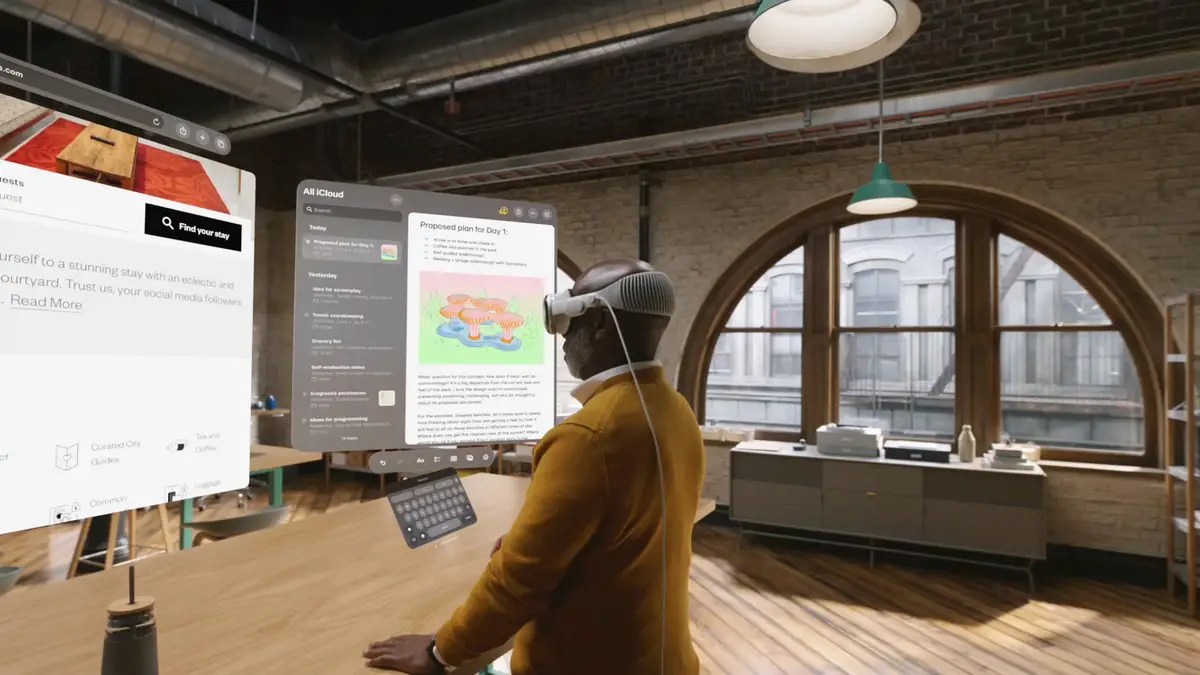While terms like “augmented reality,” “virtual reality,” and “metaverse” are commonly used, Apple prefers to define the AVP as spatial computing or mixed reality. In typical Apple fashion, the company is attempting to create a new category for this technology. Regardless of the terminology, Apple sees the AVP as a device with business applications in addition to its more obvious uses for gaming, media consumption, and web browsing. There is also potential for transforming the online shopping experience.
During Apple’s recent quarterly earnings call, CEO Tim Cook emphasized the interest shown by leading organizations across various industries in leveraging the AVP for innovative spatial computing experiences. This includes applications in everyday productivity, collaborative product design, and immersive training.
The device offers a unique “infinite desktop” feature that allows users to open and manipulate multiple programs within a vast workspace. However, its effectiveness for content creation is still uncertain.
With the announcement of 600 apps and more to come, the AVP provides access to familiar macOS and iOS apps that have been optimized for the device’s visual experience. The selection of apps is done through a gaze-based interface using familiar gestures.
The Apple Vision Pro sports a familiar-looking interface. Image Credits: Apple
One notable difference in the AVP is its transparent design, allowing users to see the real world through the device while others can see the user’s eyes. Apple believes this will create new user experiences and potentially open up new use cases. The company aims to explore new ways of interacting with software and information, making it applicable not only for consumers but also for business purposes.
According to IDC analyst Ramon Llamas, potential business use cases include training, customer-facing retail experiences, and collaboration. However, whether the device will be suitable for content creation remains uncertain.
Despite its high price point, there is already significant interest in the AVP from enterprise users. Apple’s move to bring the AVP under its device management umbrella is expected to make it more appealing to IT departments as a manageable business device.
While some questions and challenges remain, the AVP represents a significant advancement in technology and user experience. Whether it will drive widespread adoption in the enterprise remains to be seen, but its potential for business use cases is clear.


